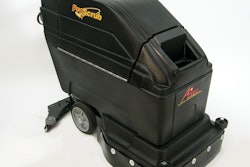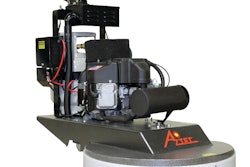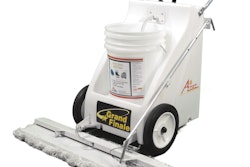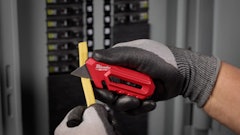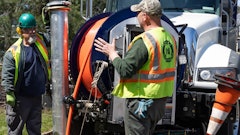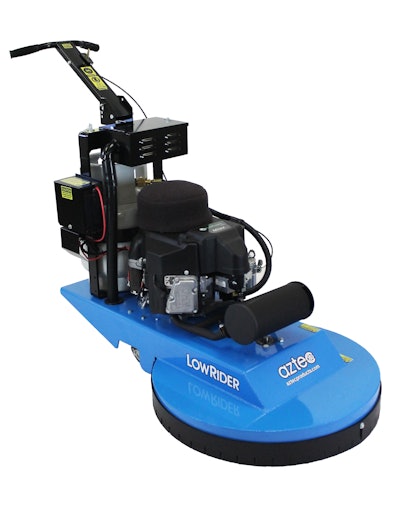
In commercial cleaning today, everybody wants the job done quicker, cheaper and "greener." The contractor's only chance to survive and prosper is to maximize efficiency; which means the right tool for the right job – do not kill a fly with a hammer. For example, when choosing cleaning chemicals, you should choose one just strong enough to do the job quickly and completely.
Too much of a chemical (or too strong a chemical) will leave dangerous residue or affect Indoor Air Quality (IAQ). Similarly, an alternative chemical that is too weak might be "greener" but require much more chemical to do the job. Any initial savings are eliminated in increased material or labor, eliminating your green benefit and your efficiency.
The larger impact of the larger environmental lifecycle for cleaning methods should also be considered. For example, an electric car seems very green to the consumer who just plugs it in, however it actually has significant environmental lifecycle drawbacks. The making of electric car batteries is so damaging to the environment that only two countries in the world allow it. The batteries only last six to eight years then need to be replaced, filling landfills with heavy metals. Additionally, while electricity seems clean, most is still generated from burning coal—a significantly dirtier process than burning gasoline or propane.
Propane floor burnishers are made to maximize efficiency and minimize waste. They are extremely fast and contrary to popular belief—very green. The new generation of propane burnishers are the greenest burnishing machines on the market based on machine expense, labor expense and emission certifications.
Machine Expense
The purpose of a burnisher is to polish the floor to a "wet-look" shine. According to The Official ISSA 447 Cleaning Times, a propane burnisher will polish a floor at 19,355 sq. ft./hr. The production rate of a 2,000 rpm corded electric machine is 8,333 sq. ft./hr. – or less than half the speed of the propane. Practically speaking, corded electric machine is really only about one-third the speed of a propane because of the need to change plug locations. A battery machine will do 9,677 sq. ft./hr.—or exactly half the speed of the propane. Because there is no need to worry about cords, this work rate is accurate.
Based on the above, it would take two battery powered machines or three corded electric machines to do the same job in the same time. Battery burnishers cost $6,000, corded electrics $1,500 and propanes $2,200. See Figure 1.
Ideally you would be able to stretch the machine life to six years with any of these machines, but with the battery burnisher you should expect to go through two additional sets of acid lead batteries at about $2000 per set, increasing your total expense to $16,000 for a six-year machine life.
Labor Expense
The other major expense in cleaning is labor. Using the above The Official ISSA 447 Cleaning Times, and based on a 60,000 sq. ft. store with a labor rate of $15/hr., the following total labor rates apply. See Figure 2.
Figure 3 displays how the total costs break down for a 60,000 sq. ft. store.
Emissions and IAQ (Indoor Air Quality)
Obviously there are no emissions from corded electric machines, however most electricity is generated from very dirty coal burning plants, contributing to greenhouse gasses, global warming and acid rain. There are also dangerous emissions connected with battery powered machines. Lead acid batteries vent lead acid fumes when they charge.
Propane machines create very low levels of carbon monoxide emissions—so low they have to be measured in parts per million (ppm). The vast majority of propane burnishers made by responsible companies also use catalytic converters to mitigate the chance of problems with carbon monoxide. Like in an automobile, these catalytic converters change carbon monoxide to carbon dioxide.
Dust Control
Dust control is another major advancement in green cleaning—specifically in the area of IAQ. A propane burnisher with dust control collects the dust, powdered finish and pad fiber particulate in a vacuum bag located on the machine. Because this dust is captured, it is not released into the air to clog lungs, make store shelves dusty or settle back on the floor. A dust control buffer can significantly reduce the amount of shelf dusting and dust mopping required to keep a store clean.
Certifications of Green Compliance and Safety
In the USA, the Environmental Protection Agency (EPA) and the California Air Resources Board (CARB) very carefully regulate the use of propane indoors. Each manufacturer of propane equipment is required to submit their propane engine to be tested and approved. Once it is approved the manufacturer is required to make every future engine the same way and to test the emissions on each new machine before it leaves the building. Additionally, the EPA requires a performance bond of up to $1,000,000 from small and midsize manufactures to assure strict compliance to approved conversion procedures.
The USA Green Building Council considers all EPA and CARB certified propane burnishers as LEED compliant for Green Cleaning and as qualifying for LEED IEQ 3.4 Credit Requirements. (LEED stands for Leadership in Energy and Environmental Design) Additionally dust control propane burnishers are approved by Green Seal for green cleaning under GS-42 section 5.5.1.2 covering hard floor maintenance machinery.
The Educated Consumer
As technology progresses, the advances that have been made with equipment, chemicals and processes are truly amazing. But as products benefits improve, they typically become more complicated. It is very important for the consumer to adequately self-educate and clearly understand what he is buying and how it will benefit his business.
Often the people who are yelling the loudest about their products are substituting volume for facts or sensationalizing intangibles. Do your own homework. Make sure to take into account all the expenses of the process lifecycle, including initial machine expense, labor expense, replacement parts expense and disposal expense—both to you and to the environment. Make profit and be a good steward.
Ed. Note: Whit Beverly is the President of Aztec Products. He can be reached at [email protected].



